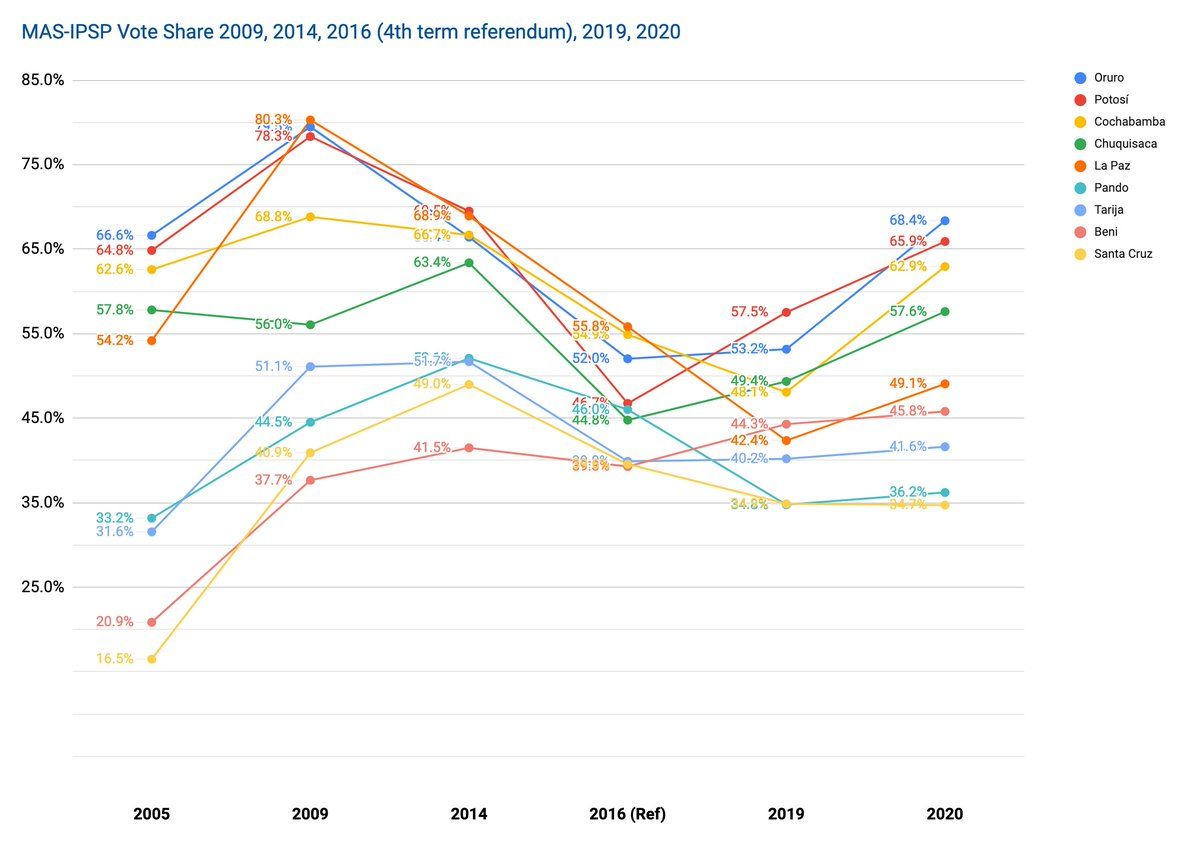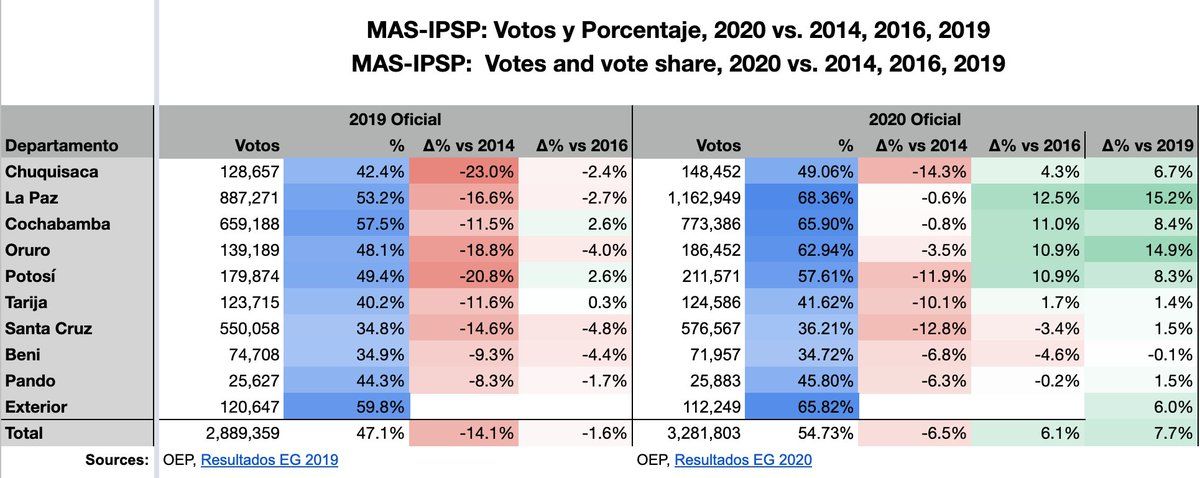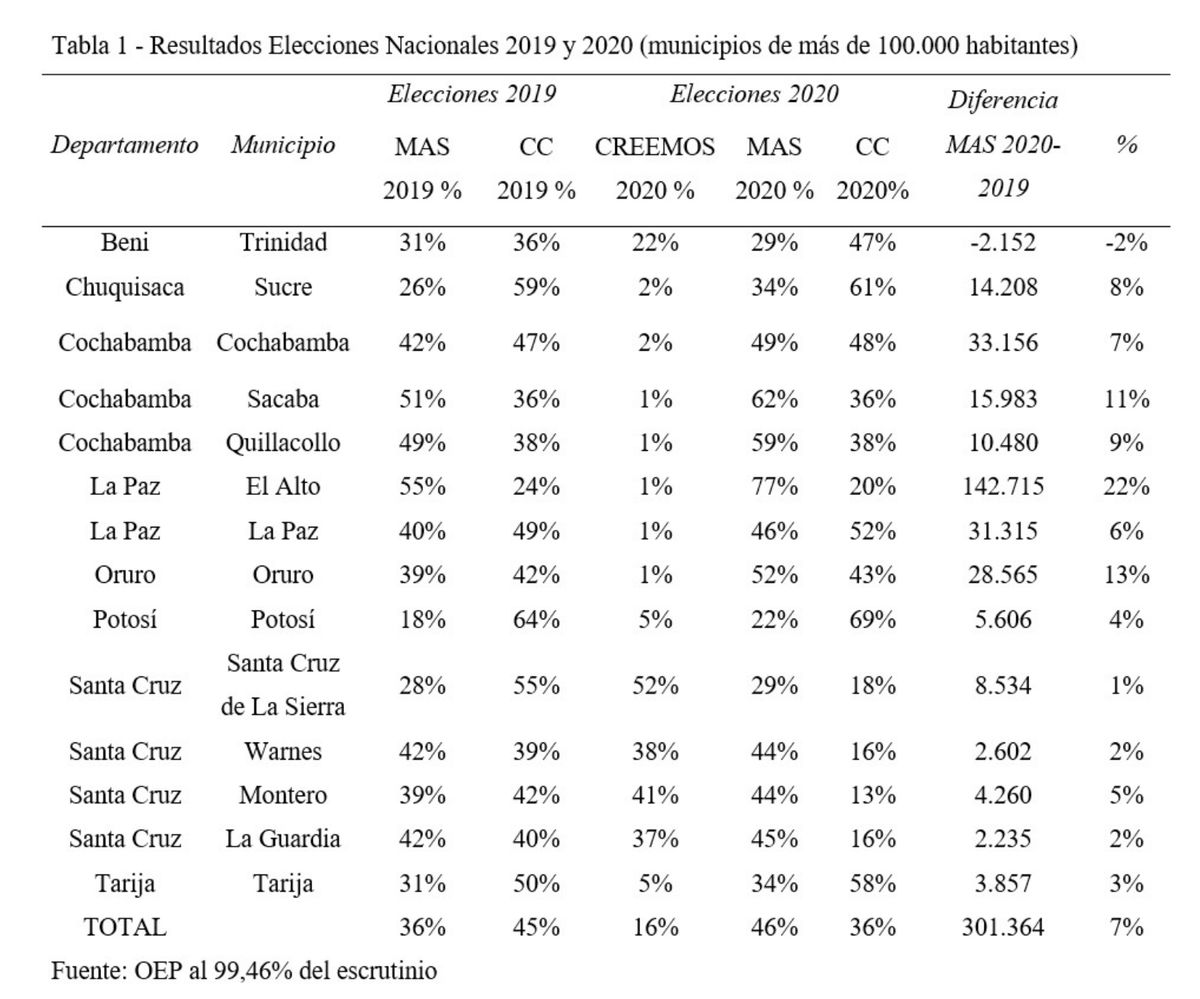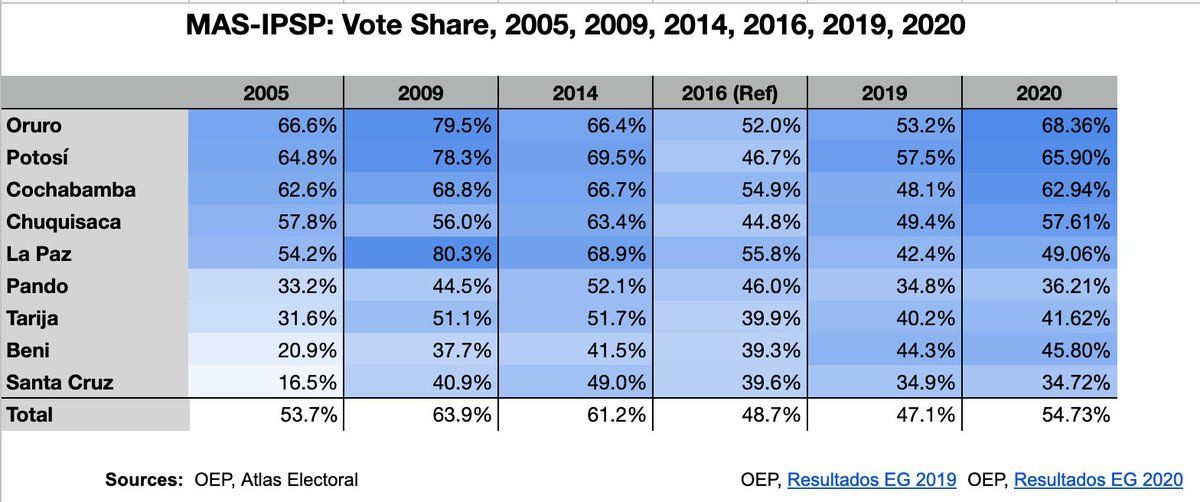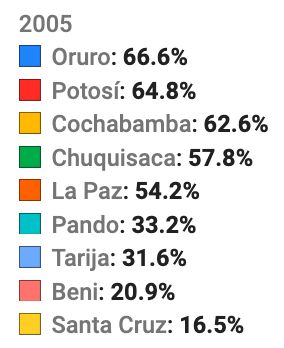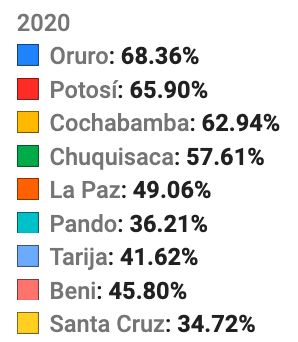-
While they gained everywhere, the big increases came in La Paz and Oruro, and secondarily in Cochabamba and Potosí. These were former MAS-IPSP voters coming home to them.
-
Where did these gains happen? For this see impressive work by Arián Laguna at @cemees_mx: cemees.org/2020/10/25/quien-le-dio-la-victoria-al-mas-analisis-de-datos-electorales/
-
Add in the MAS-IPSP's rebounds in Cocabamba city (+33k), La Paz (+31k), Sacaba (+15k), Sucre (+14k), and Quillacollo (+10k) and you have nearly the whole national shift.
-
In the process, La Paz department, and really the twin cities of La Paz and El Alto have become the swing sector between the MAS and its opponents. The defection of many in La Paz and El Alto from the coalition in 2016, 2019 was decisive, as was their return in 2020.
-
The MAS-IPSP's electoral dominance is based on its universal presence in every department and every municipality. The opposition parties are regional and disproportionately urban.
-
Listen to Vladimir Torrez on this last point: youtube.com/watch?v=7qzZcMSJZDo (from 44m onward)
